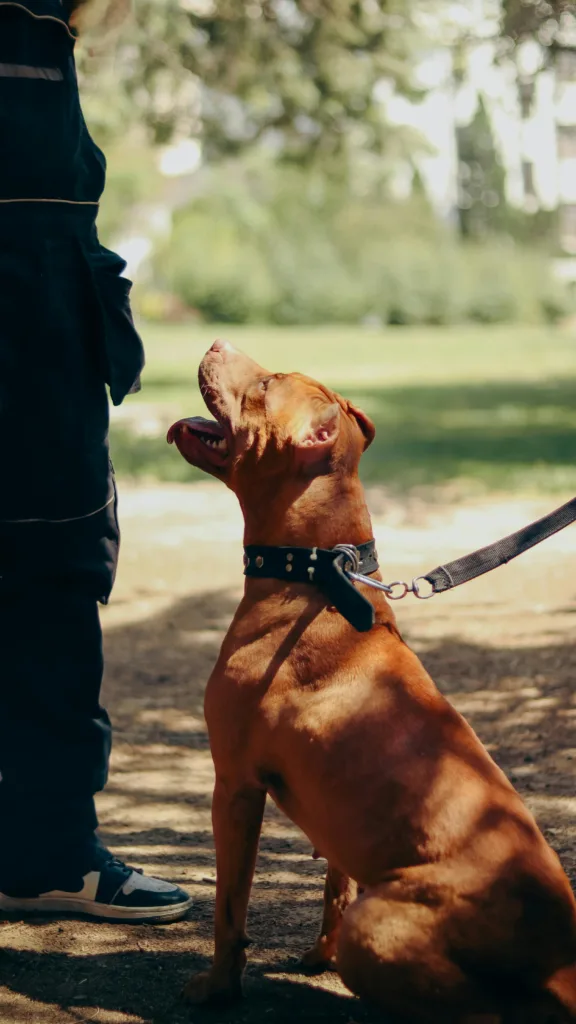Obedience training isn’t just about teaching commands. It’s about building a foundation of communication, trust, and respect that lasts a lifetime. Every stage of your dog’s life brings unique challenges and opportunities for training. Whether you’re raising a playful puppy, managing an energetic adolescent, guiding a confident adult, or caring for a wise senior, obedience training helps your dog thrive.
As a professional trainer in Nashville, I’ve worked with dogs of all ages. The key is understanding what each stage needs and tailoring training to fit. This guide will walk you through obedience training at every age, with practical tips you can start using today.
Why Obedience Training Matters at Every Age
Dogs don’t automatically “grow out of” bad habits. Without structure, those habits often worsen with time. Obedience training:
- Provides consistency in your dog’s daily life
- Builds confidence and reduces anxiety
- Strengthens the bond between dog and owner
- Promotes safety in public and at home
- Prevents unwanted behaviors from taking root
Training isn’t a one-time event. It’s an ongoing journey that adapts as your dog matures.
Puppy Training (8 Weeks to 6 Months)
Puppies are sponges for learning. This is the critical socialization window where positive exposure and structure set the stage for future success.
Training priorities for puppies:
- Housebreaking and crate training
- Basic commands like sit, down, come, and leave it
- Early leash manners
- Socialization with people, sounds, and safe dogs
- Bite inhibition and gentle play
Short, fun sessions are key. Puppies have limited attention spans, so keep training playful and positive.
We explain this stage in detail in our blog on mastering early puppy training, which offers a step-by-step look at building the right foundation.
Adolescent Training (6 Months to 2 Years)
Adolescence is where many owners hit roadblocks. Hormones, energy, and independence combine to test boundaries. A once-obedient puppy may suddenly ignore commands, pull on leash, or act out.
Training priorities for adolescents:
- Reinforcing consistency despite distractions
- Managing energy with structured play and exercise
- Leash control and impulse management
- Clear boundaries around food, toys, and personal space
- Advanced recall for safety
This is also when behavioral issues like jumping, barking, or reactivity may surface. Structured obedience prevents these from becoming lifelong problems.
Adult Dog Training (2 to 7 Years)
By adulthood, many dogs settle into predictable routines. But this doesn’t mean training should stop. In fact, this stage is perfect for building reliability and expanding skills.
Training priorities for adults:
- Advanced obedience commands like heel, place, and out
- Off-leash reliability in safe environments
- Proofing commands around distractions
- Problem-solving for lingering bad habits
- Confidence-building for timid dogs
Our Basic and Advanced Obedience Program was designed with adult dogs in mind. By building strong off-leash control and distraction-proof obedience, we help families enjoy more freedom and confidence with their dogs.
Senior Dog Training (7+ Years)
Older dogs are just as capable of learning as puppies. Training at this stage keeps their minds sharp and bodies active. It also helps them adjust to age-related changes like reduced stamina or hearing loss.
Training priorities for seniors:
- Low-impact obedience sessions
- Adjusting cues for physical comfort
- Strengthening recall for safety
- Maintaining mental enrichment through games and puzzles
- Teaching calm behaviors during slower routines
Seniors benefit from the comfort of structure. Familiar commands give them confidence even as their bodies change.
Common Training Myths at Every Stage
Let’s clear up a few misconceptions:
- “My dog is too old to learn.” False. Dogs can learn at any age with the right approach.
- “Obedience training is just for puppies.” Training is lifelong, not a phase.
- “My dog listens at home, so we’re done.” Obedience must hold up in real-world situations, not just the living room.
- “Playtime doesn’t count as training.” Structured play is one of the best ways to reinforce obedience.
For example, our Backyard Safety guide shows how everyday family fun can double as training time.
Training Challenges and How to Overcome Them
Every stage comes with its own challenges. Here are a few solutions:
- Puppies: Use short sessions and high-value rewards to keep focus.
- Adolescents: Increase structure and reduce opportunities for bad behavior.
- Adults: Keep training fresh with new commands and environments.
- Seniors: Focus on gentle, rewarding exercises that match their abilities.
If you’re stuck, professional help provides the structure and expertise you need to break through roadblocks.
Building Lifelong Obedience Habits
Training is most effective when woven into daily life:
- Ask for a sit before meals or toys.
- Practice place during family dinners.
- Reinforce recall in the yard or at the park.
- Use leash walks for structured obedience, not just exercise.
The AKC’s training rewards guide highlights how consistency and reinforcement make obedience second nature for your dog.
Final Thoughts
Obedience training is not a box to check, it’s a lifelong process. From the first sit command as a puppy to maintaining calm focus in senior years, training gives your dog confidence, safety, and freedom.
Each stage of life presents new opportunities to build trust and deepen your bond. With consistency and the right guidance, you can enjoy a well-mannered companion for years to come.
Ready to start or refresh your dog’s obedience training? Reach out through our contact page and let us help you build success at every stage of life.

